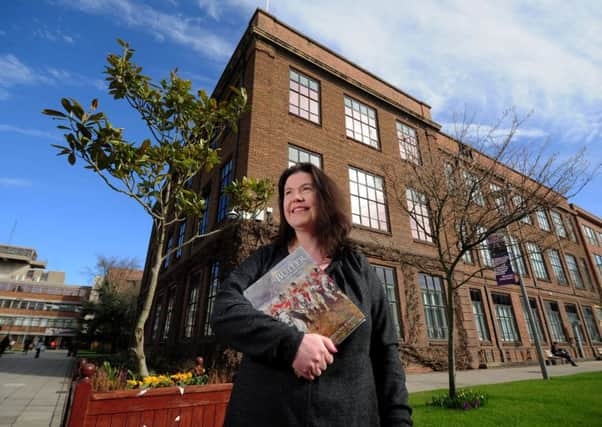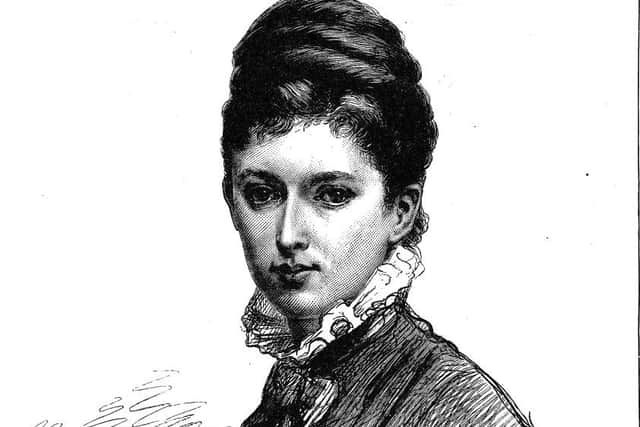Works of war artist Lady Butler can be found Yorkshire galleries


the numbers of people that gathered to see the artwork of Lady Butler in the 1870s were akin, in today’s world, to those that line the red carpet to catch a glimpse of the biggest stars in Hollywood. Such was her popularity that a policeman had to be stationed to manage crowds at the exhibition of one of her most celebrated paintings at The Royal Academy art institution.
That piece, The Roll Call, depicts the remnants of a battalion of Grenadier Guards, many exhausted and wounded, as they answer a roll call in the aftermath of battle. Both the Prince of Wales and Queen Victoria were keen to purchase the art and it was ceded to Her Majesty in 1874, now one of several Royal Collection works which list Lady Butler as their creator.
Advertisement
Hide AdAdvertisement
Hide Ad

“Once that painting hit the Royal Academy walls and it was hung at eye level, the fame for Lady Butler came absolutely immediately,” says Catherine Wynne, who has this month published a book on the war artist. “All these well known artists cheered her and said ‘this is an absolutely brilliant painting’. She was absolutely lauded for it.”
Though she had painted since childhood and was beginning to get her name known through exhibitions, it was with this piece, commissioned by Manchester industrialist Charles Galloway, that Lady Butler became a national celebrity. “She hit all the right buttons in a way and the reason why is because she had made this major transformation in war art and focused on the suffering of the soldier,” Dr Wynne, a researcher and lecturer in English at the University of Hull, explains. “She became the champion of the ordinary soldier - war art before that tended to focus on generals.”
Still today she is valued as one of the first painters to note the courage and suffering of the ordinary British soldier and such focus, without reference to army commanders, was harmonious with the feeling of the period, at a time when the military reforms of Edward Cardwell, Secretary of State for War between 1870 and 1874, were being implemented.
“She was a deeply patriotic painter but she was also a painter who wanted to show the suffering of soldiers and she was a painter who was celebrated by the army,” says Dr Wynne. “Right into the 20th century, the army recognised her and respected her for what she did because she told the soldier’s story.”
Advertisement
Hide AdAdvertisement
Hide AdThe army, says Dr Wynne, reconstructed troop manoeuvres to help her true-to-life portrayals. Her realism was also enhanced in her consulting of veterans and soldiers about their experiences and her seeking out of uniforms and equipment from the period of conflict she wished to depict.
“There’s a lot of tenderness in her work. In many of the paintings, particularly The Return from Inkerman, you can see the tenderness of the soldiers because they’re supporting their colleagues. They are coming back from war on foot, and they’re helping each other. One of them is carrying two rifles because his comrade isn’t strong enough to carry a rifle and they are supporting each other as they’re coming back in various states of being wounded or traumatised.”
The Return from Inkerman was Lady Butler’s third painting of the Crimean War and was produced in 1877, more than 20 years after the conflict. It is one of two of her works that are located in Yorkshire, this one at Ferens Gallery in Hull. Over at Leeds Art Gallery is Scotland Forever!, one of her most popular pieces. It shows the charge of The Scots Greys at the Battle of Waterloo, its title taken from the battle cry of the soldiers, who were heard calling “Now, my boys, Scotland forever!” as they went.
“Because her paintings were so famous, they used to travel through England through all the major towns,” says Dr Wynne. “Lady Butler would have queues of people travelling to see [her work]. It’s really hard to think about her today except in Hollywood terms because when The Roll Call was exhibited, they actually had to put a policeman in front of the painting to prevent the crowds from surging forward and ruining it.
Advertisement
Hide AdAdvertisement
Hide Ad“That’s the level of popularity she had. The paintings would have travelled across England, all over the place. There was money in the north with the industrial revolution, with industrialists like Galloway, and the paintings were bought up in sales.”
“It was really a sign of the times that in the 19th century we have these northern powerhouses with industrialists who are buying up these paintings,” she adds. “Many of the industrialists became wealthy art patrons and [Lady Butler] would have been celebrated and well known across Britain and someone they would have wanted to have in their galleries.”
It is why, she says, that several of Lady Butler’s works now reside at northern galleries including in Leeds and Hull, as well as Manchester and Bury. “Leeds Art Gallery and the Ferens in Hull are very proud of both of the pieces that they have. I think she’s a Yorkshire artist in lots of ways. They’re two of her most important works and both of them are celebrated in the galleries that they are in.”
Born Elizabeth Thompson in Lausanne, Switzerland in 1846, Lady Butler spent her childhood between England and Italy and was encouraged by her parents to engage with the arts.
Advertisement
Hide AdAdvertisement
Hide AdIn the 1860s, she studied at the Female School of art in South Kensington, before undergoing further training in 1869 in Florence at the Academy of Fine Arts. At first, religious subjects were the attention of her paintings, but inspired by contemporary French military painters, and with the outbreak of the Franco-Prussian war, she later turned her focus to military and battle scenes.
In 1877, she married British Army Lieutenant-General Sir William Butler, with whom she had six children. She accompanied him on his military postings from Egypt to South Africa and produced two travel books based on her experiences in the early 1900s, as well as an autobiography.
The travel throughout her life, suggests Dr Wynne, means that she did not get “stuck” into the expected routine and ways of other women of her time, enabling her to push for opportunities and challenge norms. “She never got constrained in the way Victorian women would often have been constrained so I think there was more ambition there.”
Though her reputation and fame began to fade before the turn of the century, Lady Butler continued to paint into the decade before her death in 1933 and her work made Royal Academy exhibitions for more than forty years, between 1873 and 1920. Still, her paintings are adored around the world and she remains regarded as one of the 19th century’s most prominent women, being one of only a few to acquire fame for their historic art. “She forged ahead into territory that women shouldn’t really have been in,” Dr Wynne reflects. “She set the tone for war art. She led the field.”
Book draws from family letters
Advertisement
Hide AdAdvertisement
Hide AdCatherine wynne specialises in 19th and post-19th century literature and visual culture, with particular focus on the Gothic, war art, Victorian theatre, travel writing, and colony and empire.
She began the research for her biography on Lady Butler in around 2010, interested by the travel dimension of her work - both in terms of location and time.
Relatives of Lady Butler’s sister Alice Meynell, a poet, gave Dr Wynne access to family letters, written by Lady Butler to Alice and her mother.
The content of these ranged from her travels, to her art and her life as a mum, and helped to shape Dr Wynne’s book. Lady Butler: War artist and traveller, 1846-1933 was published this month and is now on sale, including on Amazon.